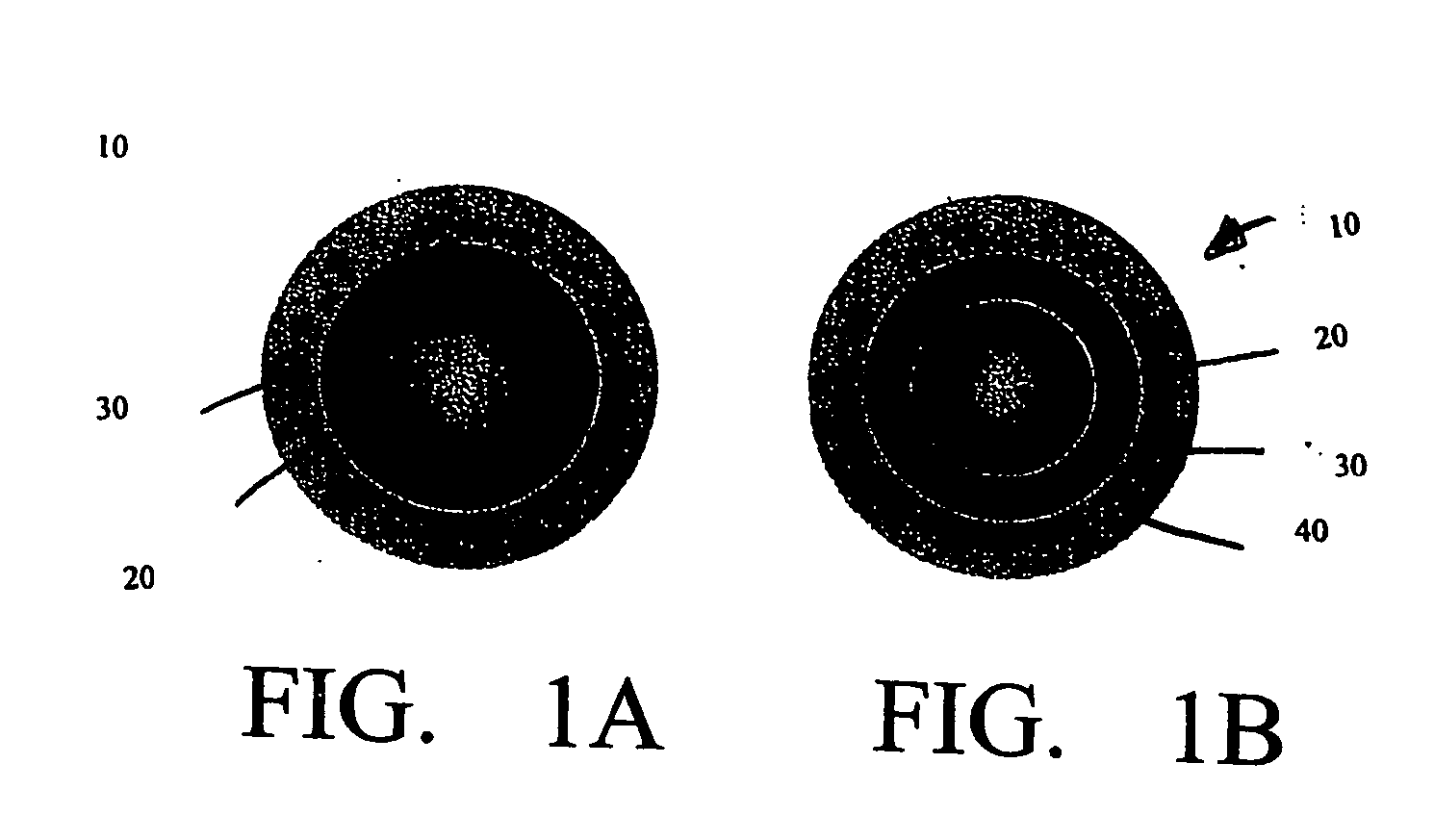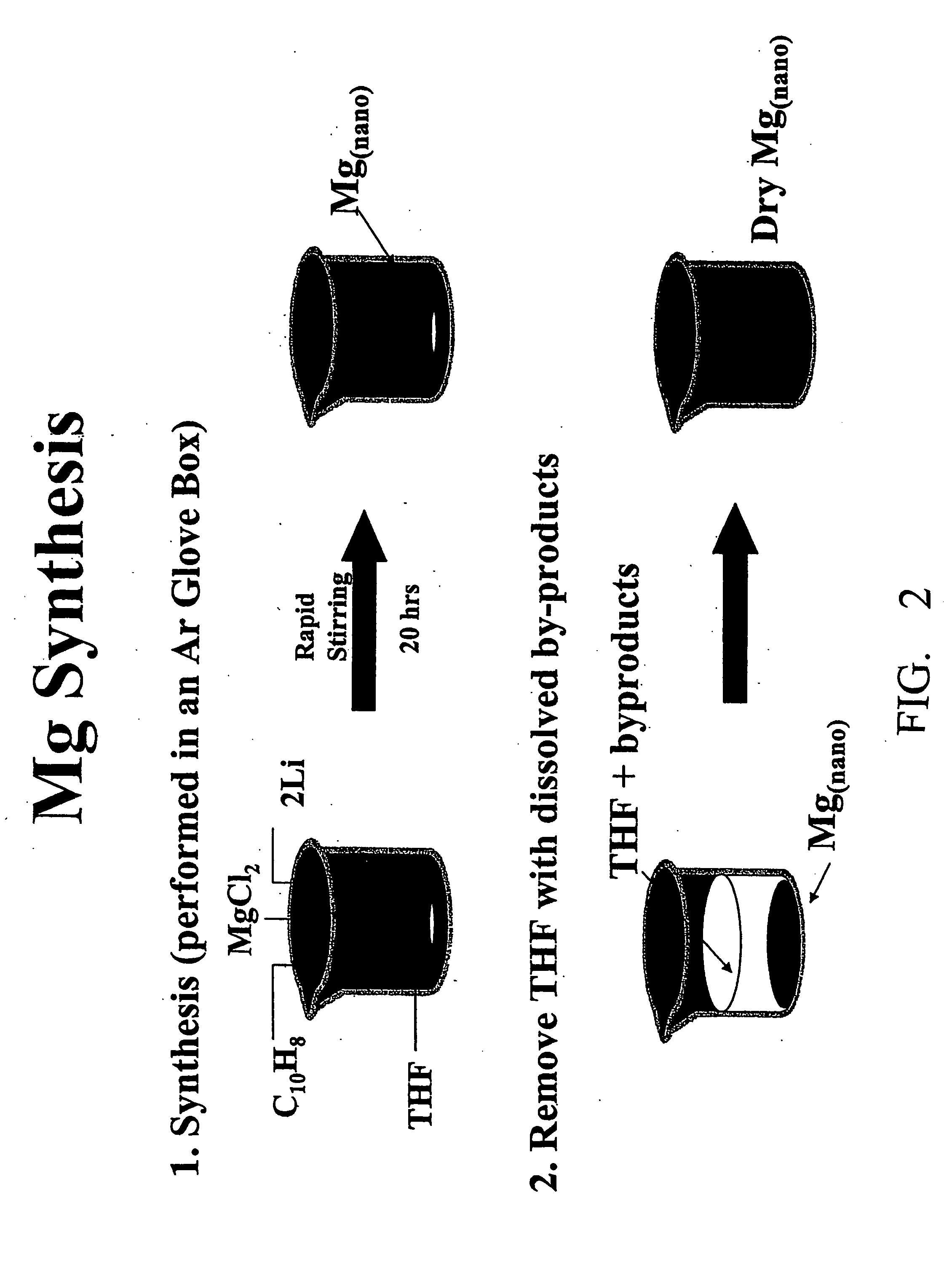Hydrogen storage material based on platelets and/or a multilayered core/shell structure
a technology of multi-layered core/shell structure and hydrogen storage material, which is applied in the direction of cellulosic plastic layered products, natural mineral layered products, transportation and packaging, etc., can solve the problems of large tank size and inefficiency, and impede the progress of hydrogen fuel cell use in automobiles
- Summary
- Abstract
- Description
- Claims
- Application Information
AI Technical Summary
Benefits of technology
Problems solved by technology
Method used
Image
Examples
Embodiment Construction
[0065] Nanoparticles, due to their high surface areas, are able to adsorb large amounts of hydrogen. This has been demonstrated by Yamaura et al. (see J. Mater. Res. 2002, 17 #6, 1329-1334) using nanoscale palladium. Adsorption temperature can be a critical aspect in the practical performance of Pd. The more efficient the H-adsorption at lower temperatures, the more practical the use of Pd as a hydrogen storage material. Kuji et al. (J. Alloys Compounds, 330-332, (2002) 718-722) evaluated the hydrogen adsorption on nanocrystalline Pd. It was found that the nanocrystalline material adsorbs less hydrogen than a corresponding bulk material. The present inventors have found that spherical nano-Pd particles adsorb less hydrogen than bulk Pd.
[0066] Additionally, Pd and other rare earth metals are extremely expensive.
[0067] Hence, in some embodiments of this invention, hydrogen storage materials have been fabricated using less expensive and more widely available elements.
[0068] A proble...
PUM
| Property | Measurement | Unit |
|---|---|---|
| Thickness | aaaaa | aaaaa |
| Thickness | aaaaa | aaaaa |
| Thickness | aaaaa | aaaaa |
Abstract
Description
Claims
Application Information
 Login to View More
Login to View More - R&D
- Intellectual Property
- Life Sciences
- Materials
- Tech Scout
- Unparalleled Data Quality
- Higher Quality Content
- 60% Fewer Hallucinations
Browse by: Latest US Patents, China's latest patents, Technical Efficacy Thesaurus, Application Domain, Technology Topic, Popular Technical Reports.
© 2025 PatSnap. All rights reserved.Legal|Privacy policy|Modern Slavery Act Transparency Statement|Sitemap|About US| Contact US: help@patsnap.com



